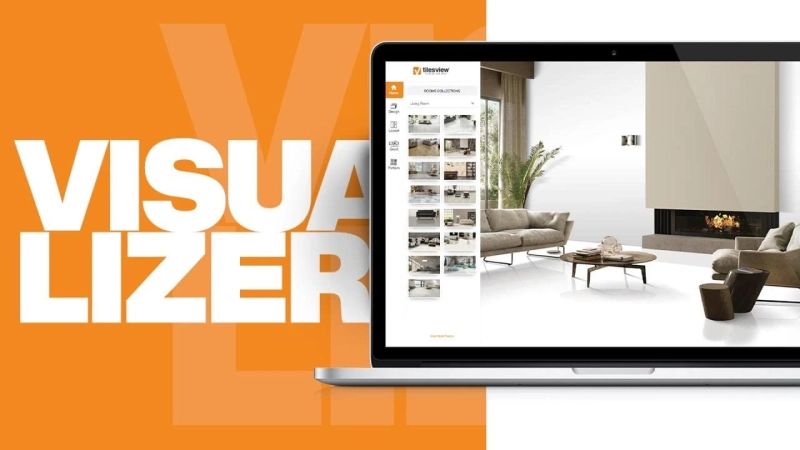Table of Contents
- Introduction
- The Power of Visualization Tools
- Exploring the Tile Visualizer
- 3.1. What is a Tile Visualizer?
- 3.2. How Does It Work?
- The Importance of Customization
- Customization Features in a Tile Visualizer
- 5.1. Tile Selection
- 5.2. Layout and Arrangement
- 5.3. Grout Selection
- 5.4. Experimenting with Patterns
- 5.5. Adding Accents and Borders
- 5.6. Simulating Lighting Conditions
- 5.7. Real-Time Changes
- Benefits of Using Customization Features
- Tips for an Effective Tile Customization Experience
- The Future of Tile Visualization
- Conclusion
1. Introduction
In the world of interior design and home renovation, the ability to visualize changes before they\'re implemented can be a game-changer. With the advancement of technology, especially in the field of design tools, the introduction of tools like a Tile Visualizer has revolutionized the way we approach designing spaces. In this blog, we will delve into the exciting realm of customization features within a Tile Visualizer, exploring how they enhance the design experience for homeowners, interior designers, and architects.
2. The Power of Visualization Tools
Visualization tools have the incredible capability to bridge the gap between imagination and reality. Whether you\'re designing your dream home, renovating an existing space, or working on a commercial project, visualization tools provide a virtual canvas where you can experiment with various design elements before making any final decisions.
3. Exploring the Tile Visualizer
3.1. What is a Tile Visualizer?
A Tile Visualizer is a software application that allows users to visualize how different types of tiles would look in a specific space. It takes into account various factors such as tile size, color, texture, and arrangement, providing a realistic representation of the final outcome.
3.2. How Does It Work?
Tile Visualizers use advanced 3D rendering technology to create virtual spaces where users can experiment with different tile options. Users can input the dimensions of the space they\'re working on and then choose from a wide range of tile designs available in the software\'s database.
4. The Importance of Customization
Customization lies at the heart of the design process. Every individual\'s preferences are unique, and design is a deeply personal endeavor. The ability to customize design elements empowers users to create spaces that resonate with their personal style, functional requirements, and aesthetic sensibilities.
5. Customization Features in a Tile Visualizer
5.1. Tile Selection
One of the fundamental features of a Tile Visualizer is the vast library of tile options it offers. Users can choose from an array of materials, colors, finishes, and styles to find the perfect tiles for their project.
5.2. Layout and Arrangement
Experimenting with different tile layouts is a breeze with the customization tools available. From classic brick patterns to intricate herringbone designs, users can visualize how different arrangements transform the overall look of the space.
5.3. Grout Selection
Grout plays a significant role in the final appearance of tiled surfaces. The ability to choose grout colors and thickness in the visualizer helps users make informed decisions about the finer details of their design.
5.4. Experimenting with Patterns
Patterns can add a touch of personality to any space. Whether it\'s a bold geometric pattern or a subtle mosaic, users can experiment with patterns in the Tile Visualizer to find the one that resonates with their vision.
5.5. Adding Accents and Borders
Customization isn\'t just limited to the tiles themselves. Users can also explore options for adding accent tiles or borders to create focal points or define specific areas within a space.
5.6. Simulating Lighting Conditions
Lighting can dramatically impact the appearance of tiles. The visualizer allows users to simulate different lighting conditions, helping them understand how the tiles will look in various scenarios.
5.7. Real-Time Changes
One of the most remarkable aspects of a Tile Visualizer is the real-time feedback it provides. As users make changes to tile selection, arrangement, and other elements, they can see the results instantly, making the decision-making process more dynamic.
6. Benefits of Using Customization Features
Using customization features in a Tile Visualizer offers several key benefits:
- Time-saving: Users can quickly narrow down options without physically sourcing and arranging tiles.
- Visual accuracy: The realistic representations help users make informed choices that align with their vision.
- Confidence: Users can approach their tile projects with confidence, knowing how the final result will look.
- Exploration: Experimenting with various options sparks creativity and encourages out-of-the-box thinking.
7. Tips for an Effective Tile Customization Experience
- Start with inspiration: Gather design inspiration before using the visualizer to have a clearer direction.
- Consider the space: Factor in the room\'s dimensions, lighting, and existing decor to make accurate decisions.
- Take risks: Don\'t be afraid to try unconventional designs—the visualizer lets you explore without commitment.
- Compare options: Use the side-by-side comparison feature to evaluate multiple design variations.
8. The Future of Tile Visualization
As technology continues to evolve, we can expect even more sophisticated customization features in Tile Visualizers. From AI-driven design suggestions to seamless integration with augmented reality for immersive experiences, the future holds exciting possibilities.
9. Conclusion
The advent of Tile Visualizers has transformed the way we approach interior design and home renovation. The power of customization empowers individuals to create spaces that reflect their unique tastes and preferences. With features ranging from tile selection to real-time changes, these tools offer an unmatched design experience that saves time, boosts confidence, and fuels creativity. As technology advances, we can only anticipate more exciting developments in the field of tile visualization, making the design journey even more thrilling.



